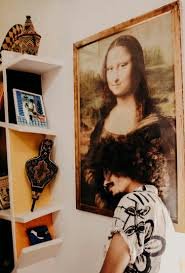Leonardo da Vinci, a Renaissance genius, left behind an invaluable legacy of art that continues to inspire and awe the world. His masterpieces, including the iconic Mona Lisa and The Last Supper, are considered some of the most significant achievements in art history. However, the passage of time, environmental factors, and human intervention have posed considerable challenges to the preservation of these works. The meticulous process of restoring and preserving Leonardo Da Vinci art requires a blend of scientific expertise, historical knowledge, and artistic sensitivity. This article delves into the complexities and techniques involved in maintaining the brilliance of Da Vinci’s masterpieces for future generations.
The Challenges of Restoring Da Vinci’s Art
Restoring Da Vinci’s artworks is a delicate task fraught with challenges. The artist’s experimental techniques and the fragile nature of his materials make his paintings particularly vulnerable. Da Vinci often used innovative, but not always durable, methods in his works, such as mixing oil and tempera directly on dry plaster for The Last Supper. This unorthodox approach led to the painting deteriorating rapidly after its completion.
Environmental factors also play a critical role in the degradation of artworks. Changes in humidity, temperature fluctuations, and exposure to light can cause colors to fade, crack, or peel. Da Vinci’s paintings, created centuries ago, have faced exposure to such harsh conditions, leading to significant damage that demands expert restoration.
Human intervention over the years has further complicated the restoration process. In attempts to “improve” the artworks, previous restorations often involved overpainting or the use of incompatible materials, which have sometimes caused more harm than good. As a result, modern restorers are often faced with the daunting task of undoing centuries of misguided repairs while striving to preserve the artist’s original intent.
Techniques Used in Restoring Da Vinci’s Paintings
Restorers employ a variety of advanced techniques to preserve and restore Da Vinci’s masterpieces. One of the most crucial steps in the restoration process is conducting thorough research and analysis before any physical work begins. This includes studying historical records, examining the materials used by Da Vinci, and understanding the previous restoration attempts.
Modern technology plays a significant role in the preservation of Leonardo Da Vinci art. Techniques such as infrared reflectography and X-ray fluorescence spectroscopy allow restorers to see beneath the surface layers of the paintings, revealing underlying sketches, hidden damage, and past restoration efforts. This non-invasive analysis helps experts make informed decisions about how to proceed with the restoration.
Cleaning the paintings is one of the most delicate aspects of the restoration process. Over time, dust, grime, and old varnishes obscure the true colors of the artwork. Restorers use specially formulated solvents and gels to carefully remove these layers without damaging the original paint. The cleaning process requires a precise balance; too aggressive, and the delicate paint layers could be lost forever.
After cleaning, conservators may undertake inpainting, a technique used to fill in areas where the paint has flaked away. Inpainting is performed with great care to ensure that the new paint matches the texture, color, and style of Da Vinci’s original work, and is always reversible to respect the integrity of the artwork.
One of the most well-known restoration efforts was conducted on The Last Supper, a painting that had deteriorated severely over the centuries. Between 1978 and 1999, a meticulous restoration project was undertaken to stabilize the painting and reveal Da Vinci’s original vision. The restorers used state-of-the-art methods to remove layers of dirt and past overpaintings, carefully filling in missing sections with watercolors to distinguish the new work from the original.
The Importance of Preventive Conservation
While restoration is crucial for saving damaged artworks, preventive conservation is equally important to ensure the long-term preservation of Da Vinci’s paintings. Museums and galleries implement strict environmental controls to protect artworks from further damage. These include maintaining stable humidity and temperature levels, controlling light exposure, and using protective glass to shield the paintings from dust and pollutants.
Preventive measures extend beyond the gallery walls as well. Digital technologies, such as high-resolution scans and 3D imaging, help document the current state of Leonardo Da Vinci art, providing valuable data that can guide future conservation efforts. By creating digital replicas, museums can also share these masterpieces with a broader audience without risking damage to the originals.
The Ethical Dilemmas of Restoration
Restoration is not without its ethical dilemmas. A key debate within the field is how much intervention is appropriate when restoring a historical masterpiece. While some argue for minimal intervention to preserve the artist’s original work, others believe that more extensive restoration is necessary to ensure the artwork’s survival. The goal is always to strike a balance between preserving Da Vinci’s legacy and maintaining the authenticity of his work.
Transparency is essential in restoration projects. Museums and conservators now openly document their processes, providing detailed records of the materials and techniques used. This transparency allows future restorers to understand what has been done and make better-informed decisions when further preservation work is required.
Conclusion
Restoring the masterpieces of Leonardo da Vinci is a complex, ongoing effort that combines art, science, and history. Each painting presents unique challenges that require innovative solutions, careful planning, and ethical considerations. The restoration and preservation of Da Vinci’s art not only safeguard these cultural treasures but also allow future generations to continue experiencing the genius of one of history’s greatest artists. As technology evolves, so too will the techniques used to protect and celebrate the enduring legacy of Leonardo Da Vinci art.
Brit is a passionate writer with a love for storytelling and exploring the depth of human experience through words. With a keen eye for detail and a thoughtful voice, Brit crafts pieces that resonate with readers and spark meaningful reflection. When not writing, Brit enjoys quiet moments with a good book, long walks, and finding inspiration in everyday life.






